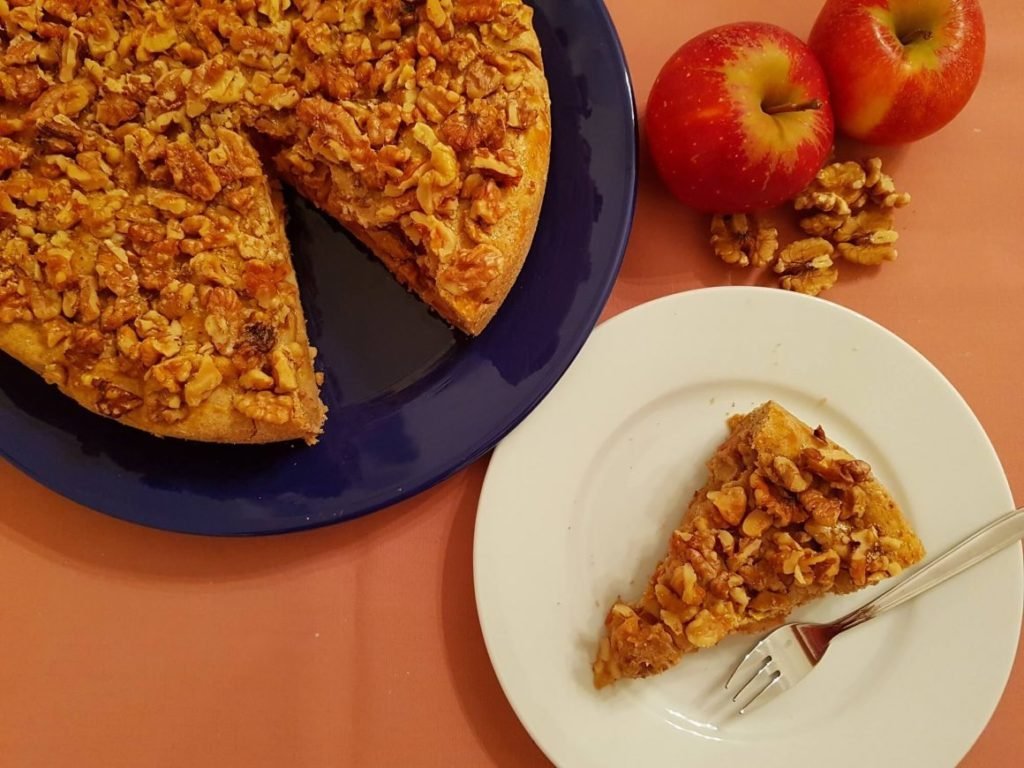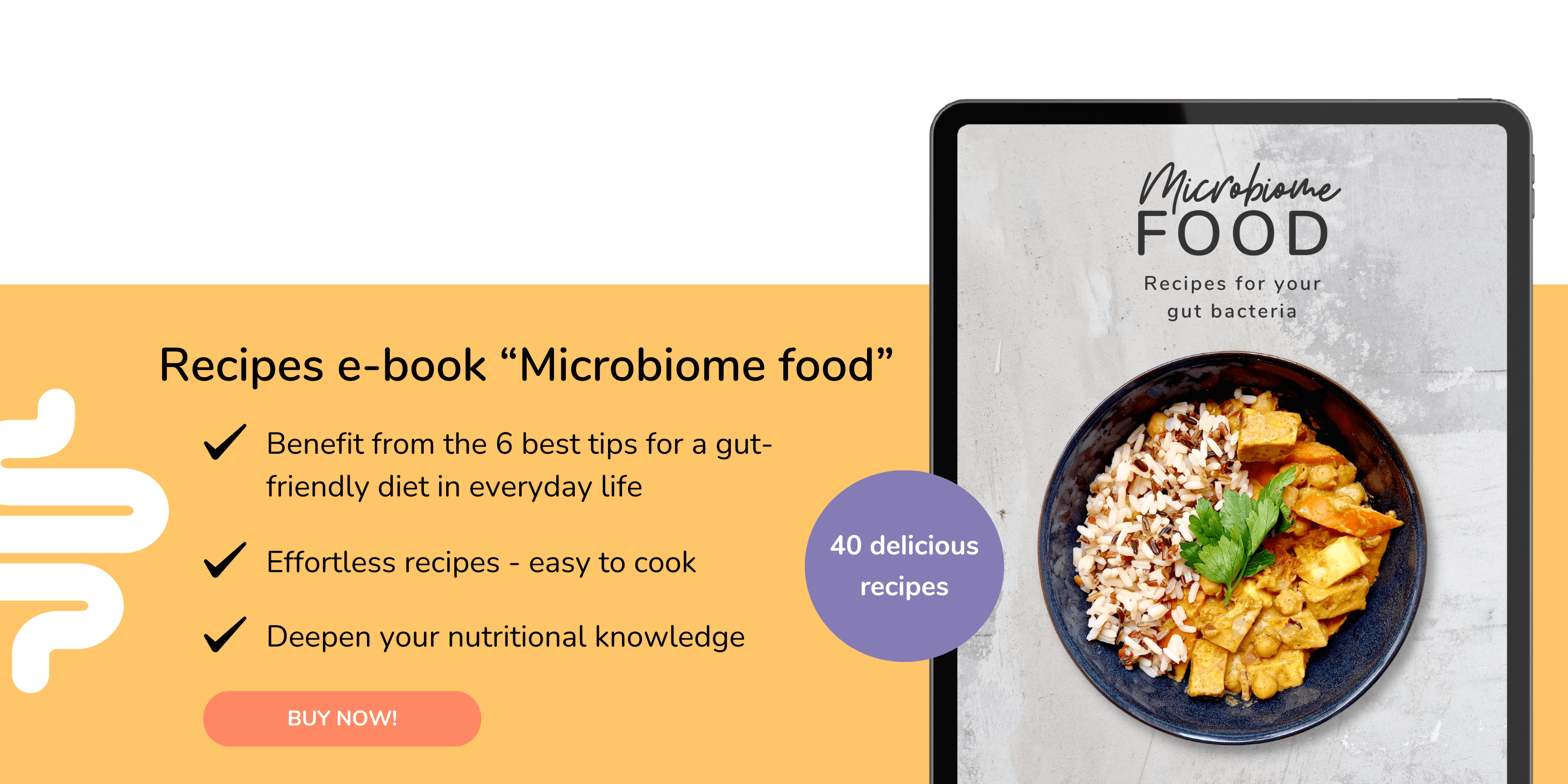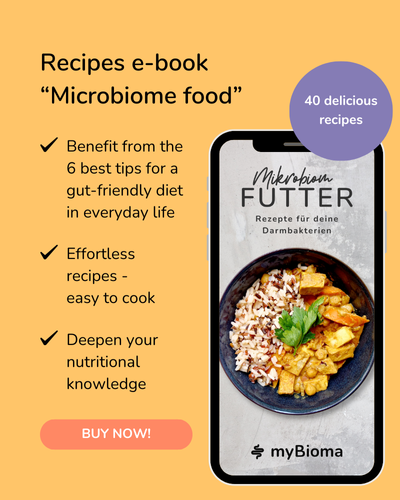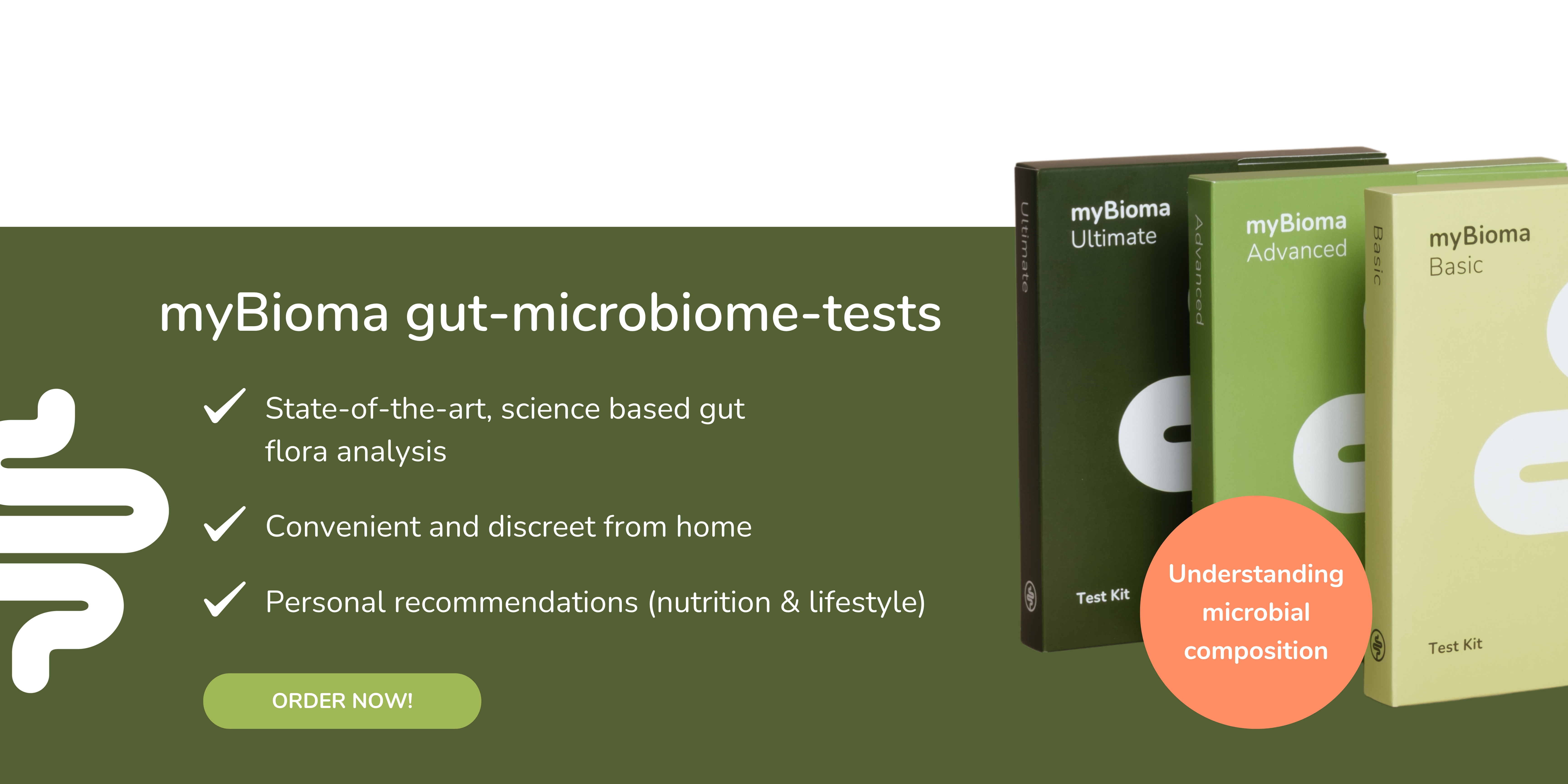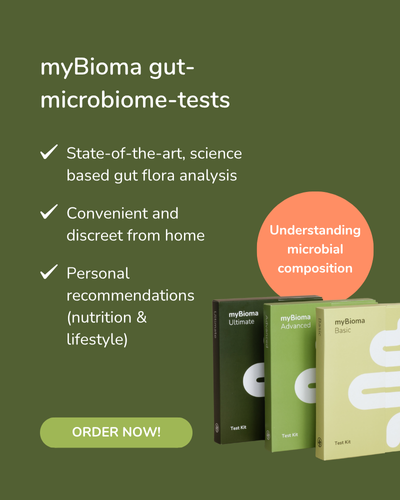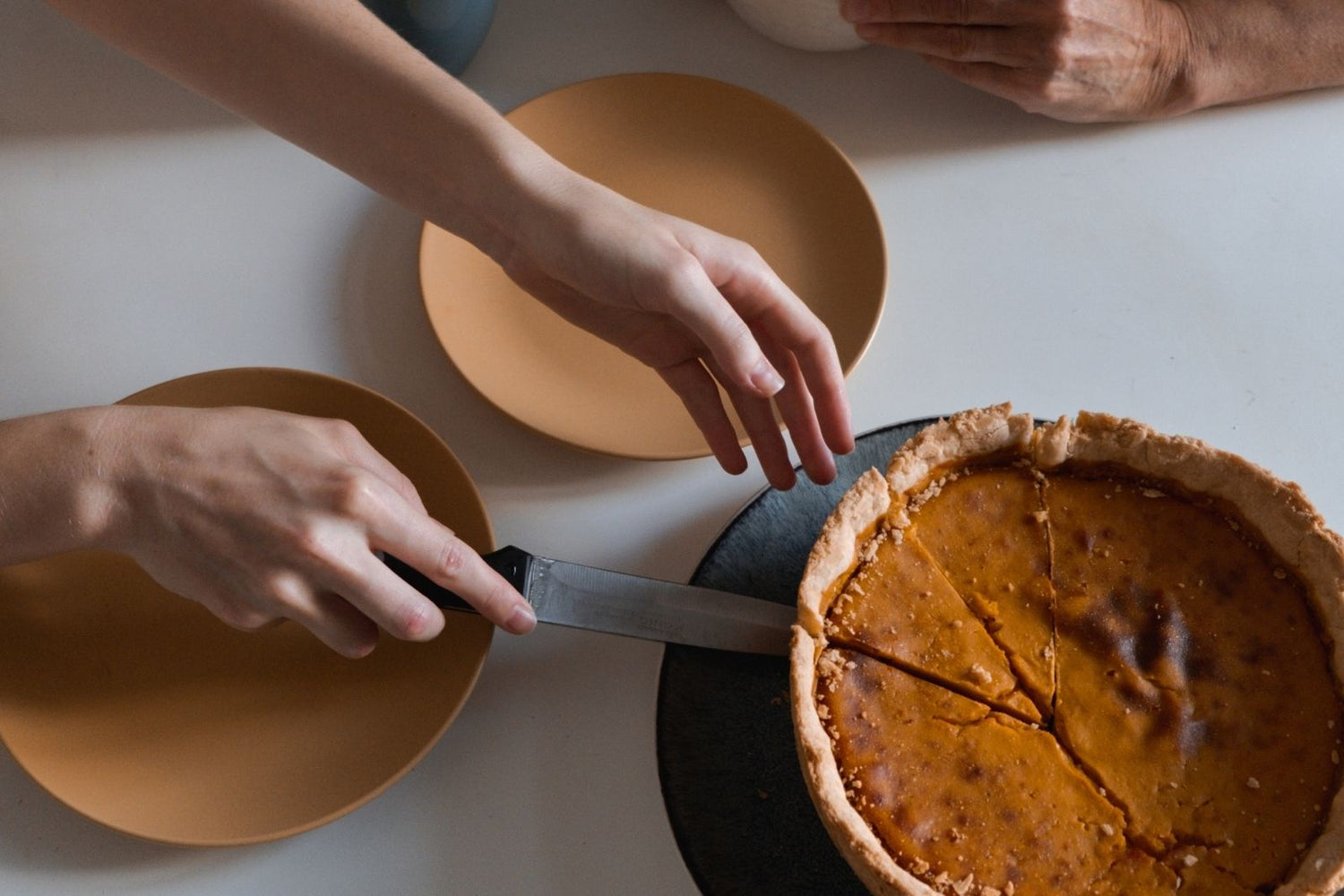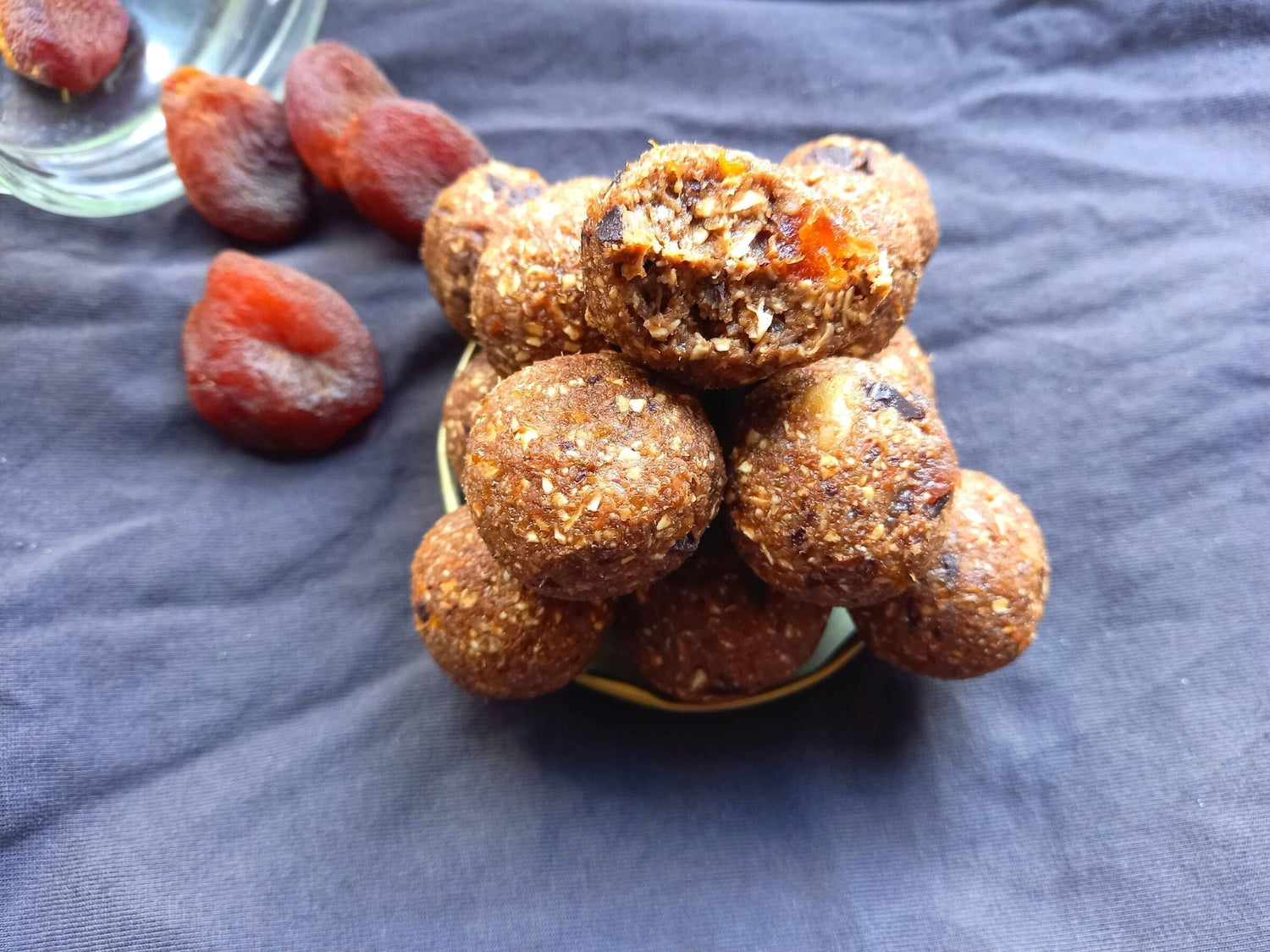Table of contents
Looking for a sweet treat for the weekend? Then we've got just the thing for you! With this delicious apple tart, you can combine wonderful cake enjoyment with lots of healthy ingredients. Apples, wholemeal spelt flour and a super nut provide your body with lots of vitamins and fiber and ensure snacking without a guilty conscience. Whether at Grandma's or at home on the sofa, this cake tastes delicious and makes for a cozy get-together. What's more, it's very easy to bake - so let's get started!
What does the intestinal flora of Grandma's dessert have?
The main ingredient in this tart is the delicious apples! Apples are a regional and seasonal fruit and are probably one of the most popular types of fruit in our part of the world. The saying "An apple a day keeps the doctor away!" doesn't come from anywhere. Apples not only taste good, they also provide our bodies with vitamin C, calcium, potassium and magnesium! They are also a source of fiber - although this is mainly found in the skin. That's why the apples are not peeled in the modified, healthier version of Granny's apple tart - so you're already giving your intestinal flora its first treat. (1)
Walnuts reduce the risk of developing cardiovascular disease or diabetes."
The story continues with fiber - wholemeal spelt flour is particularly rich in it. It is precisely this fiber that makes you feel fuller for longer, keeps your blood sugar levels constant (which counteracts the build-up of fat) and gives your gut bacteria more work to do. The latter is particularly important for your microbiome - you can find out exactly what your gut bacteria need to stay healthy in our aticle: The microbiome diet: 4 steps to healthy intestinal flora.
Apart from that, spelt is much richer in protein and the amino acid tryptophan than wheat. It also contains many trace elements such as zinc, copper and silicic acid (silicon), which you need for healthy skin, hair and nails. (2)
Walnuts are the superstar par excellence! Of all types of nuts, walnuts have the highest content of omega-3 fatty acids, more specifically linolenic acid. This omega-3 fatty acid is incredibly important for your health and cannot be produced by the body itself, which is why it must be supplied in sufficient quantities through food. The health-promoting effects of omega-3 fatty acids have already been proven in numerous studies. For example, they have a positive effect on blood cholesterol levels, help regulate blood pressure and support the immune system. Walnuts are also rich in zinc, potassium, magnesium and iron. Walnuts have also been found to have beneficial effects on the risk of cardiovascular disease and diabetes. So walnuts really are a super nut that you should regularly include in your diet! (3, 4, 5)
Last but not least, apple tart is low in sugar and a wonderful alternative to unhealthy and over-sweetened desserts for those with a sweet tooth! But now it's time to bake and enjoy!

You need these ingredients for this delicious apple cake.
Ingredients
Lactose-free, vegetarian
Preparation time approx. 45 mins, bake for 60 mins
-
2 eggs, 1 yolk
-
60 g powdered sugar
-
160 g butter
-
320 g wholemeal spelt flour
-
5 - 6 apples (preferably slightly tart and with a low water content)
-
1 organic lemon
-
Cinnamon
-
1 - 2 tbsp granulated sugar
-
2 tbsp wholemeal breadcrumbs
-
100 g walnuts
Preparation
The first step is to make the shortcrust pastry. To do this, knead together the wholemeal flour, powdered sugar and cold butter (cut into cubes) with your hands. As soon as these ingredients are well combined and have formed a crumbly mass, knead in the two eggs. It may be necessary to add a little cold water if the dough is too dry. When making shortcrust pastry, it is always advisable to use cold ingredients and work them quickly - this gives the pastry a better consistency and makes it crispier when baking! Shape the dough into a ball and leave to rest in the fridge (or a cold cellar) for an hour.

A slice of apple pie, just like grandma used to make.
In the meantime, you can prepare the apples. To do this, wash them and cut them into wafer-thin apple slices. Mix all the apple slices in a bowl with a good pinch of cinnamon, granulated sugar (depending on the sweetness of the apple), a little juice and the grated zest of the lemon. Now add the breadcrumbs - these absorb the excess juice from the apples and lemon and prevent the dough from becoming soggy and not crispy.
Preheat the oven to 180° C. Next, prepare the baking tin. We use a classic round cake tin with a diameter of 26 cm. Grease the tin with butter and then sprinkle with a little flour to make sure the dough doesn't stick.
Then take the dough out of the fridge and cut off a third and put to one side. The remaining two thirds are now rolled out thinly with a rolling pin so that the dough can fill the base and sides of the baking tin. Now place the circular dough in the tin, making sure that a small amount of dough sticks out over the edge. Press the pastry down firmly with your fingers and sprinkle the base with a little breadcrumbs if necessary. Now spread the apple mixture over the pastry and roll out the remaining third of the pastry so that it can be placed exactly on top of the tart. Now just press the two pieces of pastry together at the edges with your hands and stick them together. Finally, brush the top of the tart with the egg yolk and sprinkle the coarsely chopped walnuts on top (press them into the pastry a little with your hands so that they stick).
Bake the tart at 180° C for one hour. Leave to cool for five minutes and then carefully loosen the edges of the cake tin. The cake tastes best warm with a nice dollop of whipped cream. We hope you have a lovely weekend and that your cake melts in your mouth!

An apple pie, perfect for your guests too!
References
- EU Nährwertkennzeichnungsrichtlinie (90/496/EWG) und Rewe-Nährwerttabelle.
- Münzing-Ruef, Ingeborg: Kursbuch gesunde Ernährung. (7. Auflage) Wilhelm Heyne Verlag GmbH, München 1991.
- Pharmacological Research. 52, (2005): Understanding local Mediterranean diets: A multidisciplinary pharmacological and ethnobotanical approach.
- Deutsche Forschungsanstalt für Lebensmittelchemie, Garching (Hrsg.): Lebensmitteltabelle für die Praxis. Der kleine Souci · Fachmann · Kraut. 4. Auflage. Wissenschaftliche Verlagsgesellschaft mbH, Stuttgart 2009, ISBN 978-3-8047-2541-6, S. 406.
- Hooper L, Thompson RL, Harrison RA, et al. Risks and benefits of omega 3 fats for mortality, cardiovascular disease, and cancer: systematic review. BMJ. 2006;332(7544):752-60


